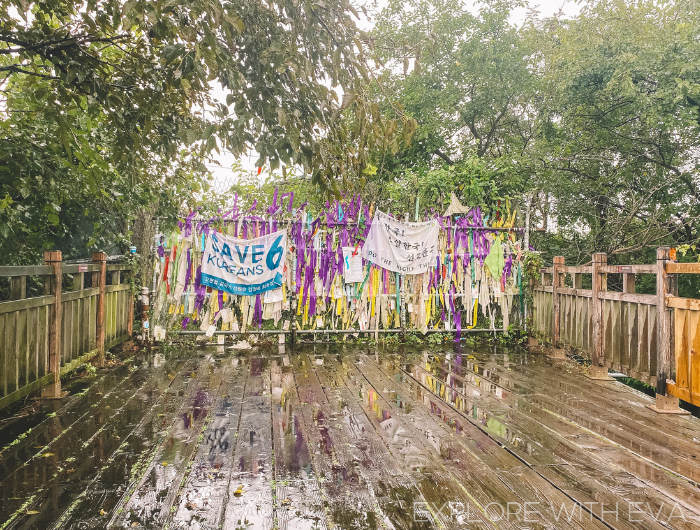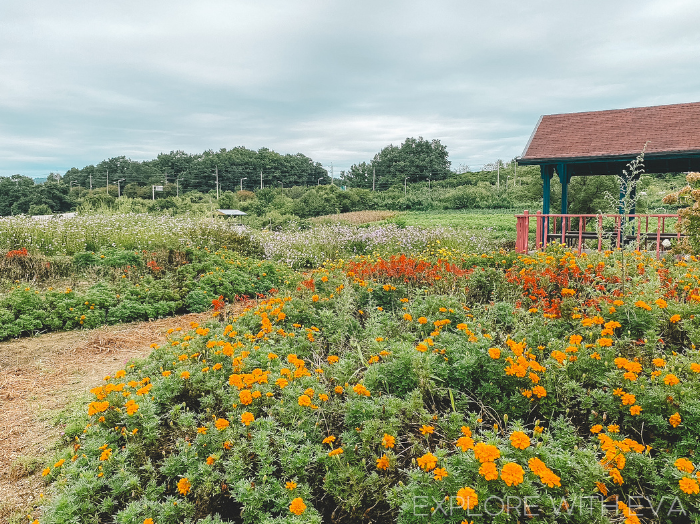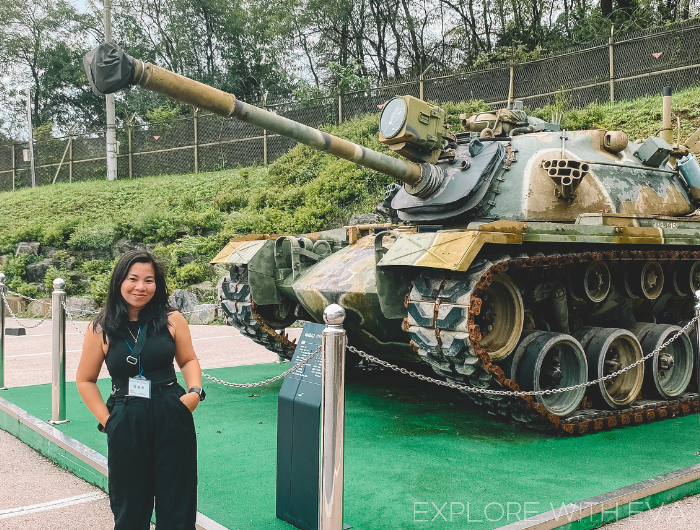During my trip to South Korea, one of the activities that I looked forward to was the Korean DMZ tour. In South Korea, DMZ stands for Demilitarized Zone and it refers to a strip of land running across the Korean Peninsula that serves as a buffer zone between North Korea and South Korea.
There are controlled tourism activities in the DMZ. Visitors can take guided tours to specific areas, which is what I did, and I'll tell you all about it in this blog post.
About the DMZ
The Korean Demilitarized Zone was established as a result of the Korean Armistice Agreement signed in 1953. It halted the Korean War but didn't lead to a formal peace treaty. The DMZ is approximately 250 kilometers long and about 4 kilometers wide, dividing the Korean Peninsula roughly in half.
Despite its name, the DMZ is one of the most heavily militarized borders in the world. Both North and South Korea maintain a significant military presence along the zone, and tensions have persisted since the armistice.
Within the DMZ, there is a specific area known as the Joint Security Area, where meetings between North and South Korean officials and military personnel take place. The JSA is the only portion of the DMZ where North and South Korean forces stand face-to-face. While guided tours normally include entering the JSA, it's currently closed to the public because of an incident in 2023 when an American soldier who was part of a tour crossed the border to North Korea. There's no news on when or if they'll resume JSA tours.
Even though the JSA is closed, there are still lots of interesting places to visit in the DMZ and its surrounding area.
 |
| disclaimer: not an actual border |
What to See During the DMZ Tour
Imjingak Peace Park
The first stop of the tour was the Imjingak Peace Park. It's located near the DMZ, specifically in the city of Paju in Gyeonggi-do, and it was established to console those who were separated from their families during the Korean War and to pray for reunification. It serves as a place for reflection on the impact of the division and the hope for peace and reunification.
One attraction in the park is the Bridge of Freedom which was used by South Korean and UN soldiers returning from the North after the armistice. It symbolizes the hope for eventual reunification and freedom. Another attraction is the Wall of Remembrance, adorned with the names of individuals who were separated from their families or lost their lives during the Korean War.
 |
| the Bridge of Freedom, with prayer ribbons attached to the barricade |
There are several things to do at the park. Visitors can take a cable car ride for overlooking views of the DMZ but I didn't do it because we were pressed for time. There are several snack bars. There were also a few souvenir stores selling shirts, keychains, hats, and other items. I bought North Korean currency to add to my collection.
Imjingak is also associated with Dorasan Station, which is the northernmost railway station in South Korea. Though trains from South Korea don't currently run into North Korea, the station symbolizes the potential reconnection of the two Koreas through railway networks if reunification were to occur.
 |
| more prayer ribbons tied to the fence along the railway |
Dora Observatory
Next on our itinerary was the Dora Observatory. On the way to the observatory, we passed a military checkpoint where South Korean soldiers went up the bus to check our passports while referencing to a passenger list. Taking photos is prohibited at the checkpoint and the area surrounding it. There are other parts of the tour where taking photos isn't allowed so make sure to listen to the tour guide. If you're not sure, then you can always ask them.
The Dora Observatory is situated on top of Mount Dora. It offers visitors an elevated vantage point to observe the surrounding landscapes, including parts of North Korea. The observatory provides panoramic views of various landmarks, including the Kaesong Industrial Complex, the city of Kaesong in North Korea, and the Military Demarcation Line, which marks the border between North and South Korea.
 |
| a view of the Military Demarcation Line and Kaesong, the old capital of Korea during the Koryo Dynasty |
Upon arriving at the observatory, we first had to watch a short documentary about the Korean War and the DMZ. There are telescopes available and if you point it in the right direction, you can see a tall flagpole with the North Korean flag. It was such a surreal experience for me.
 |
| North Korean flag as seen through the telescope |
The Third Tunnel
The Third Infiltration Tunnel is one of the tunnels discovered beneath the DMZ. This tunnel was discovered in 1978 by South Korean forces. It's one of several infiltration tunnels believed to have been dug by North Korea as part of a military strategy to potentially facilitate the movement of troops and equipment for a surprise attack on South Korea.
 |
| the ground above the Third Infiltration Tunnel |
The tunnel is approximately 1.7 kilometers long, about 2 meters high, and 2 meters wide. It was dug through solid rock, and its dimensions suggest that it was designed for the rapid movement of a large number of troops.
Visitors can go inside the tunnel and will be provided with a hard hat for safety. It's not recommended for those with health problems as it's very narrow and exiting it requires a lot of ascent. You can expect to feel out of breath while climbing up on the way back. Due to security concerns, we weren't also allowed to take photographs inside.
 |
| an illustration of the tunnel so visitors will know what to expect |
Unification Village
Lastly, we visited Daeseong-dong, or Unification Village, which is a small farming community located in the southern part of the DMZ, and it's the only civilian-inhabited area within the DMZ. While the village is within the heavily fortified DMZ, it's home to South Korean civilians who live and work there. The residents are subject to certain restrictions and are carefully vetted.
The village has loudspeakers that are sometimes used to broadcast messages and music into North Korea. In response, North Korea has its own loudspeakers. In this village, you'll also find a small shop where you can buy DMZ souvenirs and snacks.
 |
| inside the Unification Village |
Where to Book a DMZ Tour
Since the DMZ is a highly sensitive area with strict security measures in place, tourists can only visit it through guided tours. These tours are organized and controlled to ensure the safety of visitors and compliance with regulations. You can't just simply drive to Paju and access these places except for the Imjingak Peace Park which is open to the public.
Various companies offer guided tours to the DMZ and I booked mine through Klook. I'd recommend it because it's the most affordable option, prioritizing the notable places in the area. It's also one of the shortest options, which is ideal if you want more time in the afternoon to still do some sightseeing once you're back in Seoul. Other tours are pricier but have more attractions outside of the DMZ.
My visit to the DMZ was eye-opening and I had mixed emotions after the tour. Everything I learned about the DMZ and the history of the Korean War was interesting but it was sad knowing that families were separated by a struggle for power.
Is the tour worth it? Yes, definitely! If history and war stories are subjects that pique your interest, then I'd highly recommend doing the tour.






0 Comments